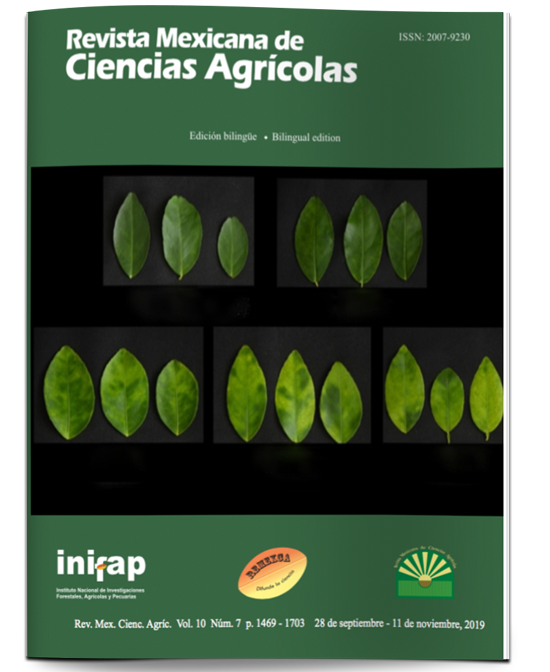Phytoremediating potential of the chicura (Ambrosia ambrosioides) in soils contaminated by heavy metals
DOI:
https://doi.org/10.29312/remexca.v10i7.1731Keywords:
absorption, accumulation, bioconcentration, translocationAbstract
The objective of the present research work was to evaluate the phytoremediation potential of Ambrosia ambrosioides soil, determine the absorption of heavy metals (cadmium, copper and lead) in the plant under different concentrations 0, 20, 40, and 60 mg L-1 applied in the irrigation water The analyzes were performed by atomic absorption, and with the data obtained the translocation factor and bioconcentration factor were calculated. The development of the experiment and laboratory analysis were performed at the Autonomous Agrarian University Antonio Narro Laguna Unit in the year 2018. A 3-by-4 factorial design with 4 repetitions was used, with factor A being heavy metal and B being the concentration of metal, 12 treatments were taken in total. The results showed that in root, stem and leaf the higher concentrations occurred in the treatment of copper at 20 mg L1 with values of 15 827.2, 13 030.9 and 4 979.4 mg kg-1 respectively. Copper was the metal that more absorbed the plant followed by cadmium and lead. The biological translocation factor indicated that cadmium is an element that the plant translocates towards its leaves more easily followed by copper. In Ambrosia ambrosioides the translocation of lead is null. The bioconcentration factor exceeded the comparative value of 1 in all treatments, this indicates that high phytoextraction was performed and that Ambrosia ambrosioides can be used in phytoremediation and soil health.
Downloads
Published
How to Cite
Issue
Section
License
The authors who publish in Revista Mexicana de Ciencias Agrícolas accept the following conditions:
In accordance with copyright laws, Revista Mexicana de Ciencias Agrícolas recognizes and respects the authors’ moral right and ownership of property rights which will be transferred to the journal for dissemination in open access. Invariably, all the authors have to sign a letter of transfer of property rights and of originality of the article to Instituto Nacional de Investigaciones Forestales, Agrícolas y Pecuarias (INIFAP) [National Institute of Forestry, Agricultural and Livestock Research]. The author(s) must pay a fee for the reception of articles before proceeding to editorial review.
All the texts published by Revista Mexicana de Ciencias Agrícolas —with no exception— are distributed under a Creative Commons License Attribution-NonCommercial 4.0 International (CC BY-NC 4.0), which allows third parties to use the publication as long as the work’s authorship and its first publication in this journal are mentioned.
The author(s) can enter into independent and additional contractual agreements for the nonexclusive distribution of the version of the article published in Revista Mexicana de Ciencias Agrícolas (for example include it into an institutional repository or publish it in a book) as long as it is clearly and explicitly indicated that the work was published for the first time in Revista Mexicana de Ciencias Agrícolas.
For all the above, the authors shall send the Letter-transfer of Property Rights for the first publication duly filled in and signed by the author(s). This form must be sent as a PDF file to: revista_atm@yahoo.com.mx; cienciasagricola@inifap.gob.mx; remexca2017@gmail.
This work is licensed under a Creative Commons Attribution-Noncommercial 4.0 International license.



